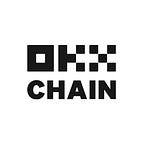Disclaimer
The opinions expressed in this publication are those of the authors. They do not purport to reflect the opinions or views of the OKTC and are for general informational purposes only.
All information on the publication is provided in good faith; however, we make no representation or warranty of any kind, express or implied, regarding the accuracy, adequacy, validity, reliability, availability, or completeness of any information on the publication.
Web3 safety can be challenging to understand, especially when considering the big picture. Setting up a wallet and securing private keys might seem straightforward, but it’s not always that simple.
FTX happened, and self-custody became a popular topic. While self-custody is indeed an ideal concept we’d like the world to embrace, it’s not as simple as commonly perceived. Users often lose funds due to malicious smart contracts, hacks, or complex transactions that are challenging to decipher. Instances of wallets being emptied after approving incorrect contracts or signing misunderstood transactions are frequently reported.
Today, there are extensions that simulate transactions prior to user approval which adds an additional level of safety. However, this falls short as there are too many ways users can lose their funds compared to traditional finance. The user experience must be enhanced while placing the utmost importance on the security of user funds.
Even with transaction simulations, telling the difference between 0xd8dA6BF26964aF9D7eEd9e03E53415D37aA96045 and 0xd8dA6BF26964aF9D7eEd9e03E53415D37aA96046, or vitalik.eth and vitaIik.eth, can still be somewhat perplexing.
At StableUnit, we’ve created a free and open-source transfer tool that doesn’t rely on any 3rd party. What if instead of sending tokens, the recipient claims them? The process is quite simple, you enable the recipient to claim a certain amount from your wallet. If there’s any mistake in the address and they can’t control it, you can cancel the transaction directly on SafeTransfer or use revoke.cash. The objective of this article wasn’t to discuss technicalities although you can read more about it for SafeTransfer in the following article.
<embedded tweet: https://twitter.com/jconorgrogan/status/1637944295746412549 >
SafeTransfer is only the first step as the ideal experience should occur directly within users’ wallets. To optimize Web3 usage, user interactions should be minimized, transaction readability enhanced, and transfer patterns improved to prevent typos and copy/paste errors. Although achieving an exceptional user experience remains a distant goal, it is crucial to remember that widespread adoption relies on this accomplishment.
For StableUnit DAO, SafeTransfer is a public good built to enhance the user experience in Web3 and make it safer. However, there is a bigger problem we’ve been tackling. Over the past 19 months, we have been addressing the risk of centralization in DeFi, which poses a significant challenge to the user experience in web3.
Although the mantra “#NotYourKeysNotYourCoins” offers sound guidance, but it doesn’t apply universally. In fact, stablecoin issuers can freeze 95% of stablecoins at any time, and the majority of the remaining stablecoins depend on centralized assets as collateral, leaving them vulnerable to potential breakdowns caused by the collateral issuer.
Earlier, we mentioned that we wouldn’t delve into technical details. However, it’s worth noting that there are multiple problems that can affect users’ safety and consequently users’ experience while interacting with blockchains. Several skilled teams in the ecosystem are addressing different challenges, but current users must be mindful of these problems since their funds may be at risk. It’s crucial to remember that DeFi represents decentralized finance, and both terms hold equal significance.
To learn more about what the StableUnitDAO is building, join our Discord and Telegram and introduce yourself to be eligible for a free SU DAO NFT that gives you a say in the DAO’s development and future.
About OKT Chain (OKTC)
OKT Chain (OKTC) is an EVM- and Wasm-compatible L1 built on Cosmos, focusing on true interoperability and maximized performance. At high scalability, developers can build and scale with low gas fees. The OKTC ecosystem and infrastructure, including the all-in-one multi-chain Web3 interface, enables a seamless experience for developers and users.
How to find us?
Website | Twitter | LinkedIn | Discord | Telegram | DevCommunity | Submit Your Project
